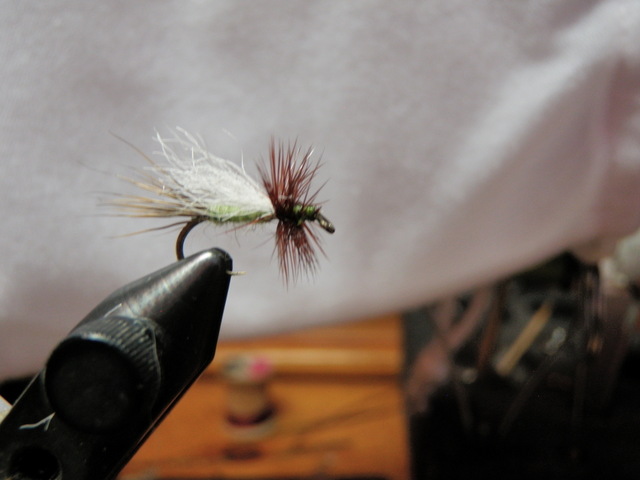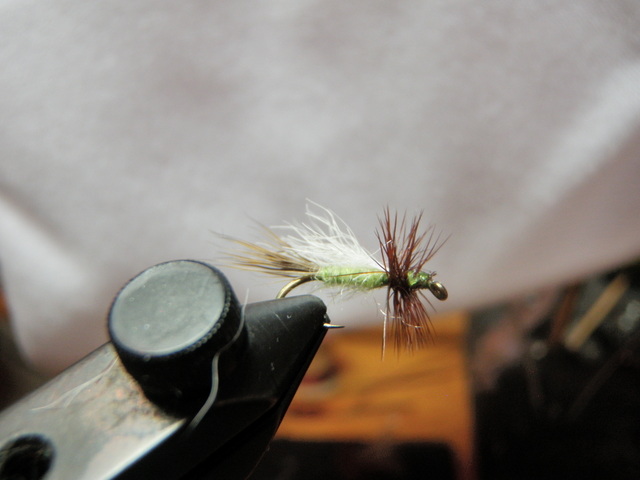I first became aware of the lime green trude during a trip to Jackson, WY in the 90’s. I arranged for a day of float fishing on the Snake River and the fly shop where I booked the trip forced me to pre-buy a quantity of flies. I was not pleased with this as I only paid for the flies I used in all my other guided fishing trips, but I went along with the policy and of course at the end of the day I possessed quite a few new unused flies. Among this residual inventory of flies were several lime green trudes.
Lime Green Trude 2013 Photo Album
Being the frugal fly fisherman that I am, I rotated a few on to my active fly patch and on occasion tied one on to my line to experiment with their effectiveness. I remember one of my early lime green trude successes was catching some fish on a lake in the Flat Top Wilderness. As time progressed I gained more confidence in the fly and had some nice action on the Roaring River in Rocky Mountain National Park and also caught some decent fish late in the afternoon on the Eagle River. One nice aspect of the lime green trude is the white calf tail wing which creates good visibility in many difficult lighting conditions.
Recently I’ve gone to the lime green trude when I spot yellow sallies, but I’ve had mixed results with this. I tend to tie them in size 14, so they may be a bit large for this application. Probably my favorite way to use a lime green trude is as the top fly on a dry/dropper setup generally in combination with a beadhead RS2 or beadhead pheasant tail. A size 14 trude can support these small nymphs but is probably not buoyant enough to stay afloat above a size 14 beadhead hares ear or larger nymph. I particularly like casting the trude and nymph combination in smooth relatively shallow pools where skittish fish are easily spooked by the increased surface disturbance caused by a larger fly.
The original trude pattern calls for a golden pheasant tippet as the tail; however, I’ve substituted a small clump of deer hair, and the fly seems to remain effective. In fact I believe that the deer hair supports the hook better and offers more buoyancy.
I tied enough additional lime green trudes so that I have around 20-25 as I get close to kicking off the 2013 season.


